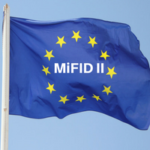MiFiD II – 10 days old: Status Report
| 16-01-2018 | Lionel Pavey |

MiFiD II is a regulation leading to reform in the European financial industry. This is an update to the original MiFiD regulation which started in 2007. It is expected to offer greater protection to investors and to increase transparency within the markets. There is a strong determination to move trading from “Over the Counter” such as voice activated markets, to more established electronic venues as these are easier to audit and monitor.
What are the aims of MiFiD II
- Greater transparency and efficiency in markets
- Moving from OTC trading to regulated trading areas
- To restore confidence lost by investors after the financial crisis
What markets are affected
- Equities
- Commodities
- Fixed Income
- Foreign Exchange
- Futures
Who is affected
- Everyone who is a participant in the market
How will it work
- Caps on the volume that can be traded in dark pools
- Pricing transparency for OTC markets
- Division between payments for trading and payments for research
- Increased standards for investment products
What has happened since 3rd January 2018
Some major exchanges – Eurex, London Metal Exchange, ICE – have received reprieves from implementation and do not have to fully comply with open access rules for the next 30 months. This is despite legislation that took more than 5 years and was delayed for 1 year. This also means that certain investors will choose a deliberate route to market for their transactions that do not need to be fully reported on for the next 30 months.
ESMA (European Securities and Markets Authority) announced on 9th January 2018 that there will be a delay in implementing the cap on dark pool trading volumes until at least March 2018. These dark pools are favoured by investors and traders who wish to trade a significant amount of stock without the rest of the market knowing or the price moving.
Markets that have traditionally worked on voice activated trading – fixed income and interest rate derivatives – are still going strong. However, there is a threat to their existence if more trades are done on recognized exchanges and/or platforms.
What about research
As the cost of research has now been split from trading, it will be very clear what an investor is having to pay. Furthermore, analysts will be more inclined to only produce analysis on the larger “Blue chip” companies – both for equity and fixed income. There is a fear that smaller companies will now fall away from the spotlight and little or no research will be produced and published. Consequently, investors might become averse to taking a position in a small company where there is no research available. There is a threat that what independent research is produced will be biased as the cost for the research has to be earned back. There are rumours that maybe the exchanges will pay for research – this could be paid out of listing fees.
So, to conclude, MiFiD II is alive and running – but they are some serious disappointments compared to how it was envisaged. Perhaps such all encompassing legislation should be reduced to bite sized chunks and drip fed into the market. Any legislation that is late in being implemented and extends to more than 17 million words is, perhaps, not what the market needs and/or wants all in one go.

Cash Management and Treasury Specialist


